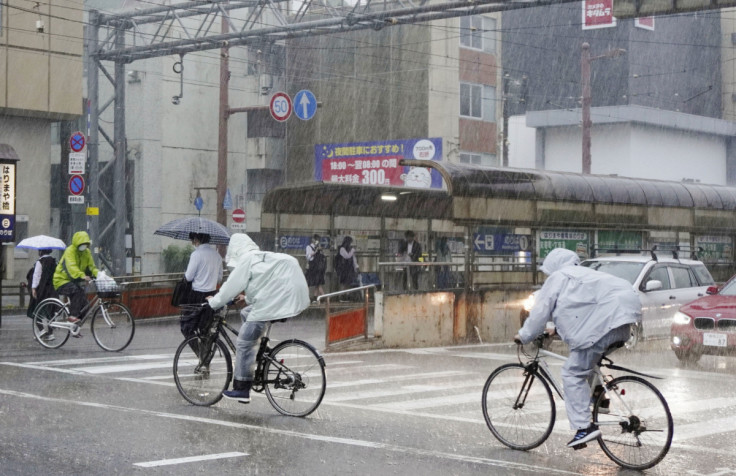Japan Slammed By Torrential Rain As Tropical Storm Nears

Parts of Japan were slammed by torrential rain on Friday as Tropical Storm Mawar neared, with authorities advising more than a million people to evacuate, many flights and other transport cancelled and power outages in thousands of homes.
One person was seriously injured and seven people had minor injuries in the southern prefecture of Okinawa, as of early Friday afternoon, according to the Fire and Disaster Management Agency.
Mawar, which wreaked havoc on Guam earlier this week, has weakened to a tropical storm from its earlier super typhoon status. The bulk of the storm was expected to pass south of the main island of Honshu as it moved into the Pacific, but forecasters said humid air from the storm could feed into a seasonal rain front, touching off heavy localised rains.
Nearly 1.3 million people across the country were advised to evacuate, the Fire and Disaster Management Agency said, with the largest number in areas of western Honshu such as Wakayama prefecture.
Just over 300 flights were cancelled as of noon on Friday, along with 52 ferries, the Transport Ministry said.
Shinkansen bullet train service was halted from Tokyo to Osaka, western Japan, as well as some other parts of the nation, NHK public broadcaster reported.
About 8,900 households were hit by power outages, the report said.
Toyota Motor said it was suspending work at its two factories in Aichi prefecture, central Japan, for Friday night to ensure employees were safe.
Television footage showed several rivers close to the top of their banks by mid-afternoon and there was a report of flooding in Shizuoka prefecture in the evening.
The JMA issued flood and landslide warnings for the western parts of Shikoku and Honshu islands, with forecasts of 350 mm (13.8 inches) of rain in parts of western Honshu in the 24 hours up to Saturday morning.
Chief Cabinet Secretary Hirokazu Matsuno said people living in areas where heavy rainfall was expected should pay attention to evacuation notices and the latest weather information.
Similar weather patterns have caused flooding and landslides in the past, most notably in the summer of 2018, when more than 200 people were killed in western Japan.
"What happened five years ago is still as clear as yesterday," one woman in the smallest main island of Shikoku told NHK public broadcaster, explaining why she had evacuated.
Though heavy summer rains are not uncommon in Japan, June is unusually early for a typhoon-type storm to near the islands.
The Japan Meteorological Agency (JMA) said on Thursday the country had experienced its warmest spring since record-keeping began in 1898.
© Copyright Thomson Reuters 2024. All rights reserved.











